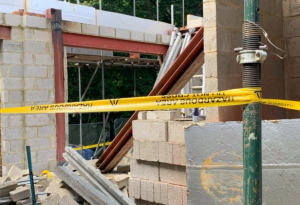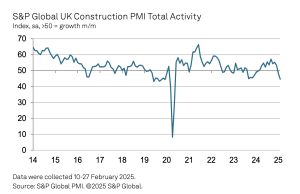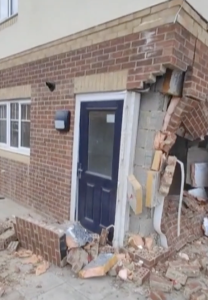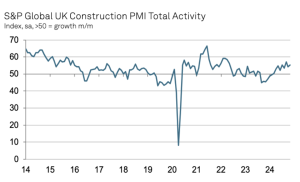Growth slowdown in construction to ease skills shortages
This post has already been read 4056 times!
The construction industry is facing a slowdown in growth in the aftermath of the EU referendum vote, according to the latest data from the Construction Industry Training Board (CITB).
The latest Construction Skills Network report (PDF, 266 KB) reveals that construction’s expected output over the next five years now averages 2% per annum – down from 2.5% in the forecast from January this year.
The remainder of 2016 and 2017 however, will see a period of limited growth and potentially a small contraction of -0.2%.
The sector’s employment growth rate has also been revised down. The annual UK-wide recruitment requirement has fallen by a third, from 232,000 to 157,000.
Over the next five years, the industry will now need 25,350 new workers every year in England, 3,540 in Wales, 1,810 in Scotland and 650 in Northern Ireland.
While the average output is 2%, there is a varied picture across the UK. Wales’ average growth rate remains well above average at 5.7% and in England, the South West (2.8%) and North West (2.2%)
present the strongest regional outlook.
Scotland (-0.6%), the North East of England (-0.1%) and the East Midlands (-0.2%) are all predicted to contract.
The biggest shift in the forecast is for the Greater London region where growth has fallen two percentage points from 3.5% in January’s forecast to 1.5%.
Stephen Radley, Director of Policy at CITB, said: “Our new figures reflect the increased uncertainty in a Brexit-facing world. While construction’s slowdown cannot be solely attributed to the result of the vote, it has certainly intensified and hastened any decline in growth.
“Recently trading conditions have become more difficult, and margins are being further squeezed. But Brexit has introduced an unprecedented number of unknowns and construction is beginning to feel the repercussions.”
nfrastructure output is a key driver of the forecast overall, with Hinkley Point C providing a particular boost to the figures. But even this leading subsector is likely to contract more than previously anticipated.
This is largely due to a pause in road building, and weak performance in the electricity sub sector for the first time in many years. While further project cancellations are not expected, slippage may also affect the forecast for the next five years.
The outcome of the referendum vote is expected to have the biggest impact on the private commercial sector where output is expected to fall from 3.4% to 1%.
This sector relies heavily on overseas investors in the London market. The capital’s office development cycle had probably already peaked but the referendum result is likely to sharpen the downturn.
Private sector house building is expected to hold up well, with projected growth at 1.6%, down just 0.3% on the previous forecast.
Work in the repair and maintenance sector, however, is down from 1.2% to 0.7%, as a result of limited disposable household income.
Stephen Radley added: “While on the whole the outlook has worsened, we do need to keep some perspective. The economy is bearing up reasonably well in the wake of the uncertainty and construction has a healthy programme of major projects and infrastructure works in the pipeline. Projects such as Hinkley, Wylfa and HS2 will undoubtedly buoy up the sector in the medium term.
“However, delays and uncertainty over investment decisions and access to migrant labour will likely intensify as Brexit nears. While employers’ main focus in the short term will be to weather the storm, it’s also important that they equip their workforce with the right skills for the challenges ahead.”























